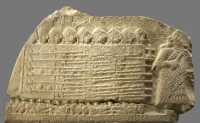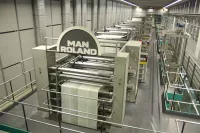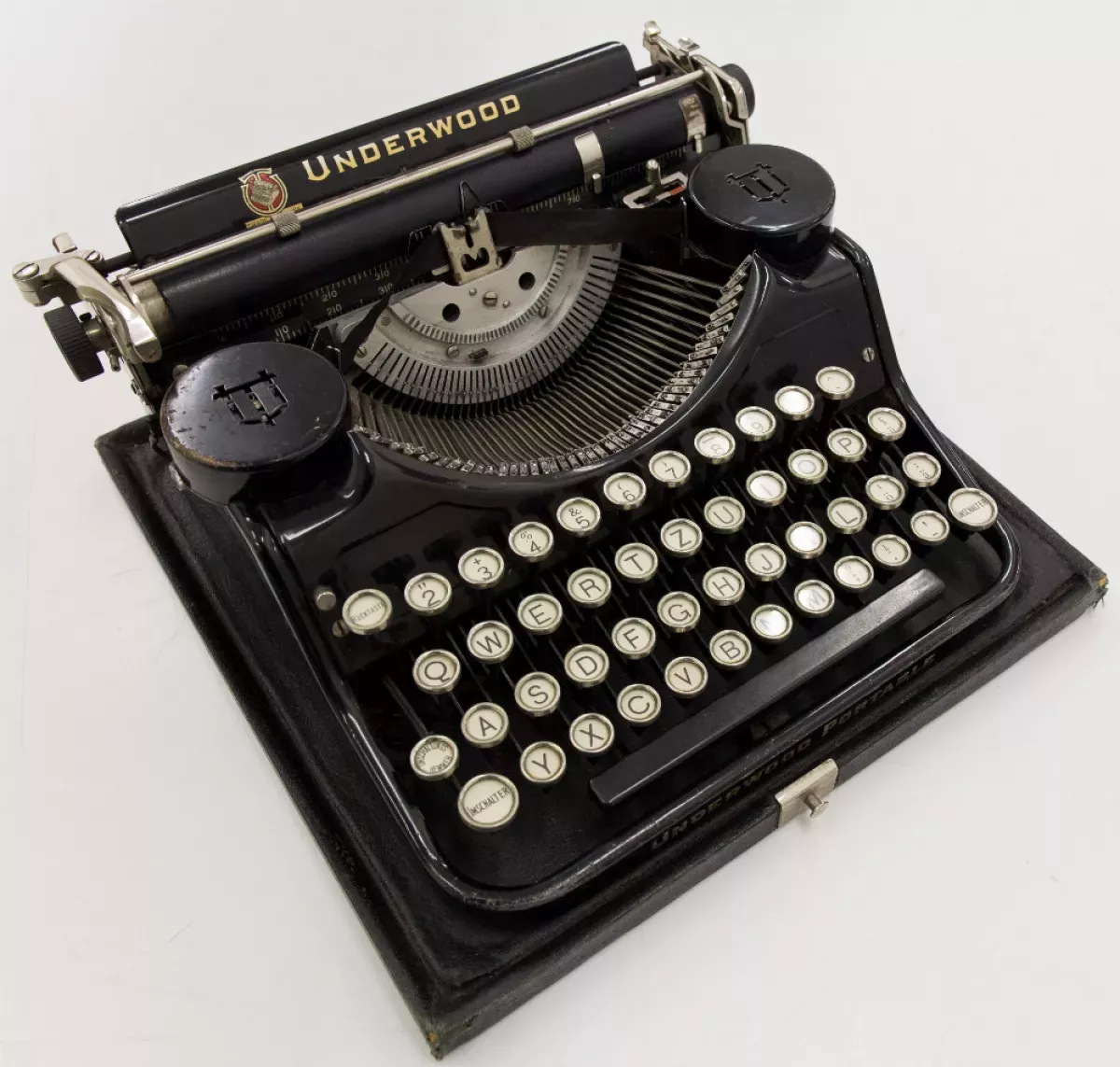A typewriter is a mechanical or electromechanical machine used for typing characters. It features keys that, when pressed, strike an inked ribbon against paper, leaving a printed character. This process creates a legible document. By the late 19th century, the term "typewriter" also referred to individuals who operated these machines.
1900: First Mass-Produced Electric Typewriter: The Cahill
The Cahill electric typewriter, dating back to 1900, holds the distinction of being the first electric typewriter to be mass-produced.
1900: Typewriters and Women in the Workforce
The early 20th century saw an influx of women into the workforce, with many taking on roles as copy typists. The 1900 census revealed that 94.9% of stenographers and typists were unmarried women, leading to a surge in typing schools and associating the typewriter with women of that era.
1902: Blickensderfer Manufacturing Company Introduces an Electric Typewriter
In 1902, Blickensderfer Manufacturing Company released an electric typewriter that utilized a cylindrical typewheel, a departure from the traditional typebar design.
1908: Typewriter Identification in Forensic Science
In 1908, A.S. Osborn, in his work "Typewriting as Evidence," explored the concept of identifying typewriters based on their unique characteristics. This marked an early step in using typewriters for forensic purposes.
1909: Hansen Writing Ball Still Used in Offices
As late as 1909, the Hansen Writing Ball, the first commercially successful typewriter, was still being used in offices across Europe.
1910: Standardization of the Manual Typewriter Design
By 1910, the manual typewriter had achieved a relatively standardized design, with most manufacturers adopting a similar mechanism of keys attached to typebars for printing.
1910: Patent Filing for the First Practical Teletypewriter
Charles and Howard Krum filed a patent in 1910 for the Morkrum Printing Telegraph, the first practical teletypewriter, marking a significant step towards long-distance communication.
1914: Invention of the First Practical Power-Operated Typewriter
James Fields Smathers invented the first practical power-operated typewriter in 1914.
1917: Typewriters and Censorship in the Soviet Union
During the Russian Civil War (1917-1922), typewriters became instrumental in samizdat, a clandestine method of publishing banned literature under Soviet censorship.
1917: Launch of the Noiseless Typewriter
The Noiseless Typewriter Company introduced the "Noiseless" typewriter in 1917, a model marketed for its quiet operation.
1920: Successful Model of the Power-Operated Typewriter
James Fields Smathers produced a successful model of his power-operated typewriter in 1920, after returning from Army service.
1922: End of the Russian Civil War
The Russian Civil War, which began in 1917, came to an end in 1922. Throughout the war, typewriters played a crucial role in the dissemination of uncensored literature through samizdat.
1923: Smathers's Typewriter Design Handed Over to Northeast Electric Company
In 1923, James Fields Smathers turned over his power-operated typewriter design to the Northeast Electric Company for development.
1925: Production of Remington Electric Typewriters
Beginning in 1925, Remington Electric typewriters were produced, powered by motors from Northeast Electric Company.
1928: Delco Acquires Northeast Electric
General Motors' division, Delco, acquired Northeast Electric in 1928, leading to the spin-off of the typewriter business as Electromatic Typewriters, Inc.
1929: Advancements in Typewriter Identification
A.S. Osborn further developed the field of typewriter identification in his 1929 textbook, "Questioned Documents." This highlighted the growing recognition of typewriters in forensic science.
1929: Northeast Electric Company Launches the Electromatic Typewriter
In 1929, Northeast Electric Company, after failing to secure a contract with Remington, decided to enter the typewriter market themselves and launched the Electromatic Typewriter.
1931: Varityper Corporation Introduces the Varityper Electric Typewriter
Varityper Corporation launched the Varityper electric typewriter in 1931, featuring a replaceable cylinder-like wheel for changing fonts.
1933: IBM Acquires Electromatic and Launches the IBM Electric Typewriter Model 01
Electromatic was acquired by IBM in 1933, and following a significant redesign, the IBM Electric Typewriter Model 01 was launched.
1934: End of the Mignon Typewriter Production
In 1934, the production of the Mignon typewriter by AEG, one of the last widely available index typewriters, ceased.
1937: Introduction of Carbon-Film Ribbons
The innovation of carbon-film ribbons in 1937 significantly improved the clarity and sharpness of typed text.
1941: IBM Introduces Proportional Spacing with the Electromatic Model 04
In 1941, IBM unveiled the Electromatic Model 04 electric typewriter, notable for introducing proportional spacing, a feature that allocated varied spacing to characters of different sizes, enhancing the visual appeal of typed documents.
1961: IBM Unveils the Selectric Typewriter
A significant milestone in typewriter history came in 1961 when IBM introduced the Selectric typewriter. This revolutionary machine replaced traditional typebars with a spherical element, or typeball, which contained reverse-image letters molded onto its surface.
1970: Typewriter Technology Adapted for Typesetting Systems
By 1970, with the rise of offset printing, typewriter technology, particularly the Composer, was adapted for use in typesetting systems. These systems combined a computer-driven input station for capturing keystrokes and formatting commands with a Composer unit that produced formatted text for photo reproduction.
1973: Smith-Corona Introduces Electric Typewriters with Interchangeable Ribbon Cartridges
In 1973, Smith-Corona introduced electric typewriters that featured interchangeable Coronamatic ribbon cartridges, including fabric, film, erasing, and two-color options, a feature inspired by earlier advancements from IBM.
1976: Introduction of Electronic Typewriters
In 1976, a significant shift occurred in typewriter technology with the introduction of electronic typewriters. These machines, unlike their predecessors, incorporated integrated circuits and electromechanical components.
1976: Olivetti Launches the First Electronic Daisywheel Typewriter: The Tes 501
Marking a major leap in typewriter technology, Olivetti launched the world's first electronic daisywheel typewriter, the Tes 501, in 1976. This innovation marked a shift from the typeball to a daisy wheel mechanism.
1978: Olivetti Introduces Advanced Electronic Typewriter Models: ET101 and TES 401
Furthering its advancements in electronic typewriters, Olivetti introduced the ET101, featuring a function display, and the TES 401, equipped with a text display and floppy disk storage, in 1978.
1979: Advancements in Electronic Typewriters
The development of electronic typewriters continued in 1979, with models like the Olivetti TES621 showcasing advancements in features and capabilities.
March 28, 1983: Strict Typewriter Regulations in Romania
On March 28, 1983, Romania implemented State Council Decree No. 98, imposing strict regulations on typewriter ownership and usage. Obtaining a typewriter required police approval, annual inspections, and registration of typed samples. This control aimed to curb dissent and monitor potential subversive activities.
1983: Increased Control of Typewriters in the Soviet Union
In 1983, the Soviet government tightened control over typewriters due to their use in samizdat. Owning a typewriter required police permission, registration of typed samples, and annual inspections, highlighting the typewriter's role in dissent.
1991: IBM Sells Typewriter Division
Facing declining sales, IBM made a pivotal decision in 1991 by selling its typewriter division to Lexmark. This marked IBM's exit from the typewriter market, which it had once dominated.
1997: Typewriters and Language Conversion in Azerbaijan
The use of Cyrillic on Russian typewriters presented challenges for Azerbaijan's transition from Cyrillic to the Latin alphabet in 1997. Turkey offered to donate Western typewriters to encourage the adoption of the Latin alphabet, but the offer was declined.
2009: Typewriters in the Digital Age
By 2009, personal computers, desktop publishing, and various electronic communication methods had significantly diminished the use of typewriters in the United States. However, certain sectors like government agencies and institutions continued to use typewriters for specific tasks, such as filling out preprinted forms.
April 2011: Closure of Godrej and Boyce
The closure of Godrej and Boyce, a Mumbai-based manufacturer, in April 2011, was widely reported as the shutdown of the "world's last typewriter factory." While disputed, it was acknowledged as the last producer of manual typewriters.
2011: Niche Market for Typewriters
In 2011, a specialized market for typewriters persisted due to regulations in U.S. correctional facilities. Prisoners, prohibited from using computers or telecommunication devices, were often permitted to own typewriters. Swintec, a typewriter manufacturer, catered to this market by producing typewriters made of clear plastic to prevent the concealment of prohibited items.
November 2012: Last Typewriter Made in the UK
In November 2012, Brother's UK factory produced what was claimed to be the last typewriter manufactured in the UK. This typewriter was subsequently donated to the London Science Museum.
Mentioned in this timeline
The Union of Soviet Socialist Republics USSR existed from to...
Azerbaijan is a transcontinental and landlocked country located in the...
Turkey officially the Republic of T rkiye is a transcontinental...

War is defined as an armed conflict involving the organized...

Offset printing is a widely used printing technique where an...
Trending

28 days ago Ryan Seacrest's Impressive Workout: Biceps Bulge Surprises Fans After Hollywood Exit

3 months ago Analyst Predicts Jaylen Brown Could Be in the MVP Conversation in 2025-2026 NBA Season

9 months ago Jenny McCarthy calls marriage to Donnie Wahlberg the 'cherry on top' of life.

1 month ago Jason Statham's 'A Working Man' achieves streaming success despite mixed reviews, replacing The Beekeeper.

27 days ago Josh Giddey Confronts Courtside Spectator During Bulls-Hornets Game; Fan Ejected After Altercation.

10 months ago Alex Sarr Shines as Wizards Beat Pistons: Sarr's 19 Points Not Enough
Popular

XXXTentacion born Jahseh Dwayne Ricardo Onfroy was a controversial yet...

Ben Shapiro is a prominent American conservative political commentator media...

Candace Owens is an American conservative political commentator and author...

William Franklin Graham III commonly known as Franklin Graham is...
The Kennedy Center Honors are annual awards recognizing individuals and...

Stranger Things created by the Duffer Brothers is a popular...
